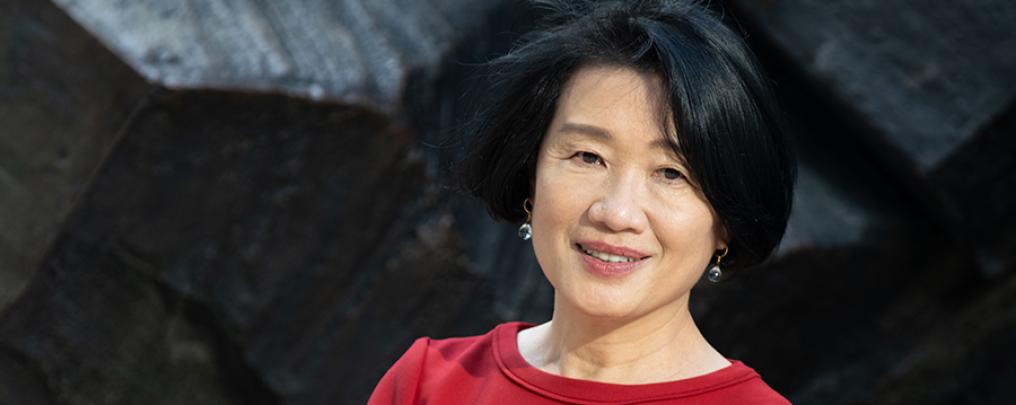
HKEX announces rule changes to attract overseas issuers – especially Greater China Issuers
Billy KM Au, Bonnie KY Yung and Jason X Wang, Partners in the Corporate & Securities practice of Mayer Brown, Hong Kong, explain some key changes to Hong Kong’s listing requirements designed to attract more Greater China Issuers.
The Hong Kong Stock Exchange (HKEX) has announced rule amendments to enhance the attractiveness of the Hong Kong market, in particular to Greater China Issuers, taking effect from 1 January 2022.
These amendments are detailed in the Consultation Conclusions on Listing Regime for Overseas Issuers (Conclusions) and this article explains some of the key changes.
Most significantly, the changes adjust both dual primary listing and secondary listing requirements to facilitate listings on HKEX of a wider spectrum of issuers that are already listed on NYSE, NASDAQ or the Main Market of the LSE (Qualifying Exchanges), in particular those with a centre of gravity in Greater China (Greater China Issuers). In addition, the amendments set forth the adoption of one common set of core shareholder protection standards (Core Standards) applicable to all issuers.
Dual primary listings
Until now, Grandfathered Greater China Issuers and Non Greater China Issuers with non-compliant weighted voting rights (WVR) structures and/or variable interest entity (VIE) structures could only apply for secondary listing in Hong Kong.
As of 1 January 2022, such issuers may in addition apply directly for dual primary listing in Hong Kong.
- Grandfathered Greater China Issuers refers to Greater China Issuers listed on a Qualifying Exchange on or before 15 December 2017; or controlled by corporate WVR beneficiaries as of 30 October 2020, and listed on a Qualifying Exchange after 15 December 2017, but before 30 October 2020.
- Non Greater China Issuers are issuers listed on a Qualifying Exchange whose centre of gravity is not in Greater China.
- ‘Non-compliant’ structures are those not fully complying with the requirements set out in the Listing Rules or with the related HKEX Guidance Letter(s).
The non-compliant WVR structures and/or VIE structures may be retained as long as the Grandfathered Greater China Issuers or Non Greater China Issuers meet eligibility and suitability requirements for secondary listing with a WVR structure under Chapter 19C of the Listing Rules – including, for instance, two full years’ track record of good regulatory compliance on a Qualifying Exchange, plus market capitalisation of HK$40 billion (or HK$10 billion with a revenue of HK$1 billion for the most recent year) – and which comply with relevant disclosure requirements.
In the event that a Grandfathered Greater China Issuer or Non Greater China Issuer is subsequently delisted from the Qualifying Exchange on which it is listed, it may continue to retain such non-compliant WVR structure and/or VIE structure in effect at the time of dual primary listing. The same reasoning to retain non-compliant structures applies when a Grandfathered Greater China Issuer or Non Greater China Issuer secondary listed in Hong Kong becomes primary listed in Hong Kong as a result of overseas delisting, migration or primary conversion (see below).
Secondary listings
There are currently two routes to secondary listing on HKEX. To provide clearer guidance and reduce complexity, HKEX has now decided to consolidate both routes in one dedicated chapter for secondary listing of overseas issuers – the revised Chapter 19C. In addition to codifying existing practices, other major changes in relation to secondary listing include, amongst others:
1. Removal of ‘innovative company’ requirement for issuers without a WVR structure
The ‘innovative company’ requirement, as HKEX explains, was originally designed with Greater China Issuers in mind, to prevent WVR structures from becoming commonplace in the Hong Kong market by ring-fencing them to new economy issuers. Until now, all secondary listing applicants seeking to list through the concessionary route (which was the only available route for Greater China Issuers) needed to demonstrate that they are innovative companies as part of the suitability requirements, regardless of whether or not they have WVR structures.
But to attract secondary listings of issuers, in particular Greater China Issuers from traditional sectors, this innovative company requirement, as of 1 January 2022, has been removed for all overseas issuers without a WVR structure in order.
Grandfathered Greater China Issuers and Non Greater China Issuers having non-compliant VIE structures (see above) will also benefit by the removal of this innovative company requirement for seeking a secondary or dual primary listing, provided they do not have a WVR structure.
2. Lowering market capitalisation requirement for issuers without a WVR structure
Under the revised rules, all overseas issuers without WVR structures (including those with a centre of gravity in Greater China) will be allowed to seek a secondary listing under the revised Chapter 19C by meeting either of the following:
- market capitalisation of HK$3 billion, plus five full years’ track record of good regulatory compliance on a Qualifying Exchange (or other recognised exchange, but for Non Greater China overseas issuers only), or
- market capitalisation of HK$10 billion, plus two full years’ track record of good regulatory compliance on a Qualifying Exchange.
Greater China Issuers without WVR structures will greatly benefit from this adjustment, as the previous market capitalisation requirement for them was HK$40 billion (or HK$10 billion with a revenue of HK$1 billion for the most recent year). Coupled with the removal of the innovative company requirement, more secondary listings of Greater China Issuers without WVR structures are expected after the revised rules of 1 January 2022.
Change of listing status
A new guidance letter on ‘change of listing status’ from secondary listing to dual primary or primary listing on the Main Board will also take effect at the same time as the revised rules.
Under this provision, a secondary listed issuer will be regarded as a primary listed issuer in the event of delisting from the exchange on which it is primary listed (overseas delisting); or regarded as a dual primary listed issuer in the event of migrating trading of the majority of the issuer’s shares to HKEX (migration), or voluntary conversion by the issuer from secondary listing to dual primary listing (primary conversion).
Upon change of listing status, all exceptions, waivers and exemptions available to the issuer on the basis of, or conditional upon, its secondary listing status will cease to apply, save as provided under the guidance letter.
Core Standards
The Core Standards, which supersede the existing Appendix 3 to the Listing Rules – Articles of Association – aim to provide the same level of protection to all investors and will be applicable to all issuers.
Accordingly, existing listed issuers should take steps to ascertain they are in full compliance with the Core Standards; otherwise, they would have until their second annual general meeting following 1 January 2022 to make the necessary changes to their constitutional documents to conform with the Core Standards. Below are highlights of the major differences.
1. Preamble
An issuer must demonstrate how the domestic laws, rules and regulations to which it is subject and its constitutional documents, in combination, meet the Core Standards.
2. General meetings
An issuer must give members reasonable written notice of its general meetings (which normally means at least 21 days for an annual general meeting (AGM) and at least 14 days for other general meetings), and, generally, the issuer must hold its AGM within six months of the end of its financial year.
3. Members’ right to speak/vote
Members must have the right to speak and/or vote at general meetings, except where a member is required by the Listing Rules to abstain from voting to approve the matter under consideration (for instance, where the member has a material interest in the matter).
However, if an issuer is subject to a foreign law or regulation that prevents the restriction of a member’s right to speak/vote, the issuer may have to enter into an undertaking with HKEX to put in place measures that achieve the same outcome.
4. Members’ right to convene a meeting
The minimum stake required for members to convene an extraordinary general meeting and introduce resolutions to a meeting agenda must not be higher than 10% of the voting rights, on a one vote per share basis, in the share capital of the issuer.
5. Supermajority vote
A ‘supermajority vote’ means at least three-quarters of the voting rights of the members and voting in person or by proxy at the general meeting – which is mandatory for approving changes to the issuer’s constitutional documents or a voluntary winding up.
As regards variation of rights, a supermajority vote of the issuer’s members of the class to which the rights are attached is required. In addition, the quorum for such a meeting shall be holders of at least one-third of the issued shares of the class.
6. Modifications/waivers
Greater China Issuers are required to comply with the Core Standards with modifications – notably, allowing a different minimum length of notice period for general meetings, and a two-thirds (as opposed to three-quarters) majority definition of a supermajority vote.
In any other circumstances, a variation of the Core Standards requirements will not normally be granted. But if it is granted, based on case-specific circumstances, such waivers or modifications should be disclosed in the listing documents and, potentially, the Company Information Sheets.
Billy KM Au, Bonnie KY Yung and Jason X Wang, Partners in the Corporate & Securities practice, HK office
Mayer Brown
Copyright © Mayer Brown 2021


